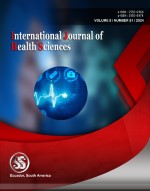Advancements in pediatric imaging
A review of techniques for reducing radiation exposure
Keywords:
Pediatric imaging, radiation exposure, leapfroggingAbstract
Pediatric imaging research has been particularly susceptible to the phenomenon of technologic "leapfrogging", in which advances in technology have outstripped progress in validating and implementing them in a patient-based, clinical setting. This review describes work underway to develop new techniques that can reduce pediatric imaging radiation exposure, principally by investigating new acquisition technologies and adjusting existing techniques, protocols, and practices to better conform to the special imaging needs of pediatric patients. These efforts have already helped develop and bring to the clinic new technologies such as iterative reconstruction for CT, dynamic helical CT, and quantitative susceptibility mapping for MRI. The pieces are also in place for additional future benefits for pediatric imaging. Advances in imaging, particularly for pediatrics, are often achieved late in the product cycle, with the result that new beneficial technologies take years, sometimes an entire market cycle, before they are adopted clinically due to the slow pace of capital equipment acquisition.
Downloads
References
AAPM (2012 Winter School Will Be About Security and Safety of Radiotherapy Devices Part I and II)
Brown E, Toomey R, Batty R, Conduit C, McShane C, Lee J, Stranger G, Horton S. Radiation Exposure of Pediatric Patients During Radiographic Procedures: A Multicenter Study. J Am Coll Radiol. 2014; 11(2):180-187.
Canon C. What the Radiologist Should Know About Hepatic Elastography. Abdom Imaging. 2015; 40(3):787-790.
ERSN National Learning Channel to Optimize the Use of Radiation (Dutch Project)
European Alliance for Medical Radiation Protection Research (EURAMED)
ICA-Atom (9th International Conference on Advances in Radiation Oncology and Physics)
Kleinerman RA. Cancer Risks Following Diagnostic and Therapeutic Radiation Exposure in Children. Pediatr Radiol. 2006; 36(Suppl 2):121-125. DOI: https://doi.org/10.1007/s00247-006-0191-5
Kleinman PK. Diagnostic Imaging 101: What First-Year Residents Need to Know About Pediatric Radiology. Pediatr Radiol. 2; 49(5):616–631.
McLelland G, Bezzina AJ, Gregoriou GK, Kandath H, Moir J, Tully R, Torlak R, Popel N, Durber A, Khunkhun P, Offiah AC. Advancements in Pediatric Imaging: A Review of Techniques for Reducing Radiation Exposure. Diagnostics. 2016; 11(2):226.
Narayanan S. Techniques for Reducing Radiation Exposure in Pediatric Imaging. AJR Am J Roentgenol. 2015; 213:W191-W2.
Radiation Centre of SURREY-Care (European Project)
Rehman L, Zebunnessa R. Knowledge of Radiation Exposure and Hazards Among Pediatricians. Springerplus. 2013; 2:334.
The Alliance for Radiation Safety in Pediatric Imaging
The Society for Pediatric Radiology
Published
How to Cite
Issue
Section
Copyright (c) 2017 International journal of health sciences

This work is licensed under a Creative Commons Attribution-NonCommercial-NoDerivatives 4.0 International License.
Articles published in the International Journal of Health Sciences (IJHS) are available under Creative Commons Attribution Non-Commercial No Derivatives Licence (CC BY-NC-ND 4.0). Authors retain copyright in their work and grant IJHS right of first publication under CC BY-NC-ND 4.0. Users have the right to read, download, copy, distribute, print, search, or link to the full texts of articles in this journal, and to use them for any other lawful purpose.
Articles published in IJHS can be copied, communicated and shared in their published form for non-commercial purposes provided full attribution is given to the author and the journal. Authors are able to enter into separate, additional contractual arrangements for the non-exclusive distribution of the journal's published version of the work (e.g., post it to an institutional repository or publish it in a book), with an acknowledgment of its initial publication in this journal.
This copyright notice applies to articles published in IJHS volumes 4 onwards. Please read about the copyright notices for previous volumes under Journal History.
















